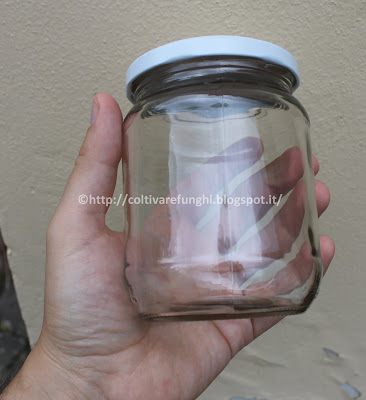Generally the first technique one learns is liquid culture. Not because it is the simplest, (well perhaps it's not), but it is achievable with easily foundable materials. Learning to work with agar jelly is the next step, but requires bit more expensive equipment and maybe a little more experience too, and we'll talk later about it.
In this post I will list the materials that you have to get to be able to implement your first experiments with liquid culture. This stuff is not difficult to find, but that is not granted to have at home :) Let's start:
1) Glass jars any, as these are fine. The thicker the glass is, the better results you'll have, due to much more resistance to sterilization cycles.
2) Polypropylene syringes (a type of plastic that is resistant to high temperatures), 10 or 20 ml, and that you will easily find in any pharmacy.
3) 18G needles, you will find these at the pharmacy aswell. Their color is rose, and are larger than those usually found with syringes.
4) Aquarium filter wool (polyfill). It is a synthetic wool that you can find in pet stores, or at the supermarket. Often it is used to stuff pillows.
6) Honey. The wildflower is just fine but the acacia is the clearest, and works better. You can also use Corn syrup or Maple syrup: actually they work even better. Then I will explain the details.
7) Distilled water; also tap water works, but often turns yellow after sterilization.
8) A pressure cooker. For this technique any is fine, no need a big as mine ;)
9) Finally, silicon paste, aluminum foil and a bit 'of elastic bands of medium width. I guess there's no need for pictures :)
10) Optional: they are not essential but are good to have: a precision scale like this, you are on the web a few bucks. It will help to measure out the honey, alternatively we can do "by eye" ...
... and a kitchen flame torch like this one. It will help to sterilize syringe needle. Alternatively we can use the heat of the kitchen stove.
In the next posts I will explain how to use all this good stuff.









No comments:
Post a Comment